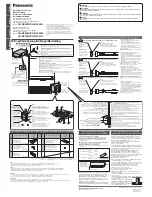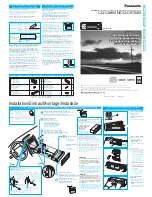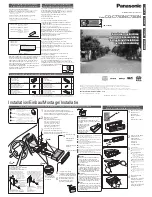
5782DEC
Professional H.264 and MPEG-2 Decoder
VLPRO INTERFACE
Revision 1.0
Page - 13
Input IP Address:
This parameter allows the user to set the IP Address of the input data.
Destination UDP Port Number:
This parameter allows user to select the destination UDP port
number for the input data stream.
Gratuitous ARP:
This parameter allows the user to enable/disable the Gratuitous ARP feature. This
is most useful when accepting a unicast stream to prevent last hop switch from Mac address
flooding.
Gratuitous ARP Address:
When Gratuitous ARP is enabled, the Decoder Data port will ARP for the
IP address provided at an approximate 2 minute interval. A suggestion is to enter the default gateway
of the subnet. This will refresh the switches’ MAC address table and help to prevent a unicast flood
scenario.
IGMPv3 Mode:
This parameter allows the user to include or exclude IGMPv3 SSM sources.
IGMPv3 SSM Source <1-6>:
This parameter allows the user to set the IP address to be used while
forming the source filter for IGMP V3 communication.
SMPTE302 Mode:
This parameter allows the user to select how the SMPTE302 audio streams are
handled; the options include Auto, PCM, DolbyE and AC3.
Adaptive Latency:
This parameter allows the user to enable adaptive latency mode. This parameter
can also be configured to the Min latency mode.
When adaptive latency is configured “ON”, input stream
HRD parameters
are examined to
determine which buffer settings can be applied for the decoder.
When configured “OFF”, input stream
HRD parameters
are ignored and
the maximum buffer offset
is applied to the decoder as a safety precaution.
When configured “MIN”, input stream
HRD parameters
are examined to determine which buffer
settings can be applied for the decoder, but also more aggressively if HRD parameters are missing,
the decoder tries to infer from other parameters. This is an advanced setting, the user must be very
careful before setting the decoder to MIN adaptive latency mode. If the buffers are set to minimum
level and the HRD parameters are incorrect, it will result in a buffer underflow.
Delay Control
Video Delay:
This parameter allows the user to add a delay to the video to synchronize the audio
and the video stream. This can be done by sliding the video delay to the desired setting, to a
maximum of 200ms.
Audio Delay <1-8>:
This parameter allows the user to add a delay to the audio to synchronize the
audio and the video stream. This can be done by sliding the audio delay to the desired setting, to a
maximum of 50ms for each of the 8 audio streams.
Input Program Control
Program Tuning Mode:
This parameter allows the user to tell the decoder how to select the
program to decode. The options include Auto or Manual PID Select.
Auto Program Select Mode:
This parameter allows the user to specify which program to decode,
the options include First Program in PAT, Specific Service Name, Specific Program Select or Lowest
Program Number. This parameter is only available if Program Tuning Mode is set to Auto PID Select.
















































